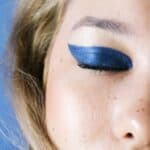Influencers are no strangers to trolling, but the severity and volume of hate comments varies depending on a number of things – including the host platform.
Lifestyle creator Amelia Liana Sopher received a negative comment on TikTok about her outfit and responded with: “You guys can be f-cking mean, OK. I’ve been online for ten years and I’ve never received the amount of mean comments that I do on TikTok.”
Sopher isn’t the only creator speaking out about receiving an abundance of unkind comments on the short-form video app. #Hatecomments has 468.8 million views and in November, lifestyle creator Ambar Driscoll made a TikTok about the negativity on the platform and explained the comment section is one of the “most horrible places because people are so negative”.
The TikTok comment section is chaotic, which is admittedly part of the fun. If TikTok’s comment section is more negative than other platforms, is it because of the algorithm, the user base, or Gen Z’s savage sense of humour (just see the “fairy comments” trend)? Arguably, it’s a mix of all three.
You may also like
When a post goes viral on the app, it often seems to land on the For You Page (FYP), meaning it will be watched by people outside of the designated target audience. This means a creator is more likely to receive a plethora of hate comments and a wave of honest (and potentially negative) reactions. As with any app, more views results in more negative comments. Creator and aesthetician Sean Garrette stated in a tweet: “The downside of going viral on TikTok is the amount of nasty hate comments from trolls lol.”
As Dallas-based creator Sarah Barthel noted: “If you post content on TikTok, I’m assuming you’ve gotten a negative comment at one point or another, because for whatever reason, TikTok is a breeding ground for negativity.” In February, US creator Bran Flakezz argued the app had been more “toxic” lately and negative comments were increasing. As he pointed out, comments are not “directly hateful” but are “annoying and judgemental”.
Different degrees of trolling
Trolling is far from a new phenomenon and there are different levels of it, which makes it difficult for platforms to filter messages and monitor comments. As CORQ has explored, some trolling is so horrendous that users are making allegations of child abuse and neglect to social services about influencers. For others, the trolling they experience is getting negative messages or mean comments about their appearances, voice, content or outfits.
Not everyone has had a negative experience with TikTok. Lifestyle vlogger Lucy Moon said in a video: “The comments are so much harsher on YouTube than they are on TikTok or Instagram.” Her thoughts sparked a discussion in the comments, with some creators saying they have a worse experience on Reels. YouTuber Lily Pebbles mentioned in the comments that she has had the opposite experience to Moon, with TikTok being the worst since its content “can be served to anyone”.
What is TikTok doing to remove hateful and negative content? According to its community guidelines enforcement report, it uses “a combination of innovative technology and people to identify, review and action content that violates our policies”. Between October and December 2022, the company removed 85,680,819 videos – 2,122,586 of these videos were from the UK.
When CORQ reached out to TikTok for comment, the company said:
- It does not tolerate bullying and harassment on its platform, which is outlined in its Community Guidelines
- It removes all expressions of abuse, including degrading statements, and it has more than 40,000 safety professionals
- The app has comment prompts, which ask users to rethink posting a comment that may be unkind or inappropriate, and reminds them of the guidelines
- It is easy for users to report comments and block accounts
- Creators can make a list of keywords that will be blocked from any comments on their videos or use the “filter all comments” feature, which prevents comments from being displayed until they’re approved by the creator
- Multiple comments can be deleted or reported at the same time, and spam or offensive comments are hidden when TikTok detects them
TikTok is far from the only platform where creators experience bullying. Social media apps are used by millions of teens and young adults every day, and platforms need to prioritise protecting their creators from harassment and finding more innovative ways to crack down on trolling.
By Caroline Edwards, CORQ news and features writer.










How and why comment sections are shaping content on social media